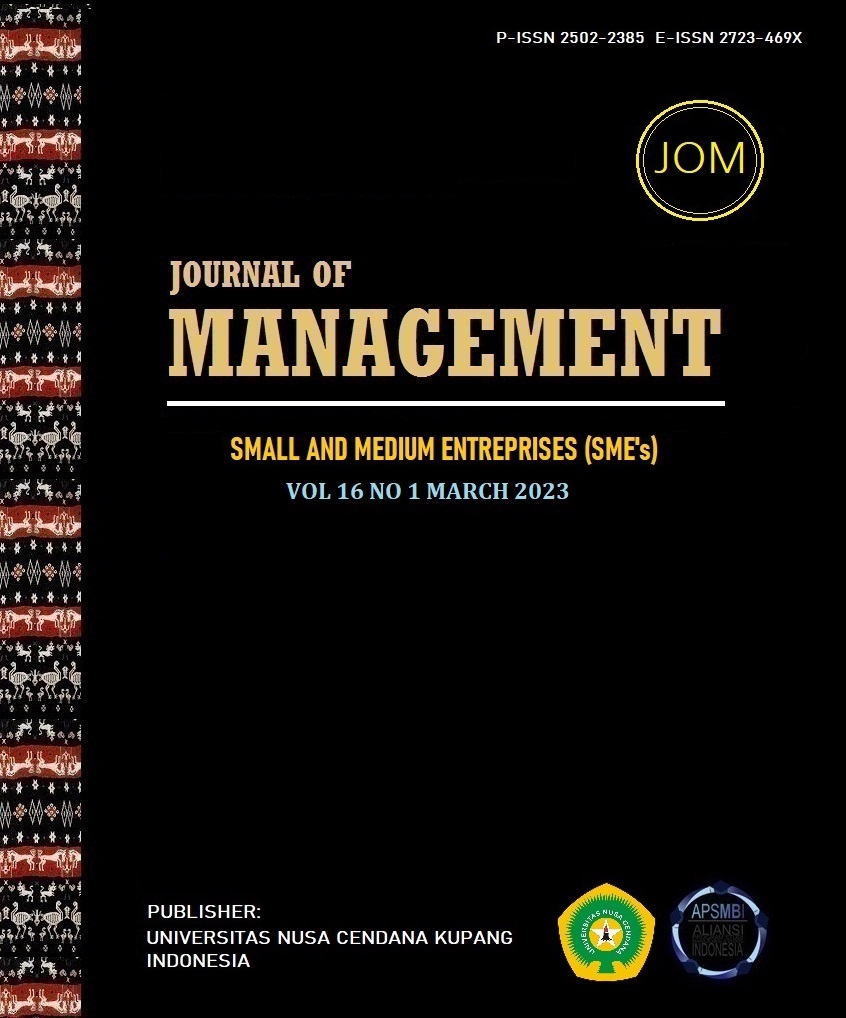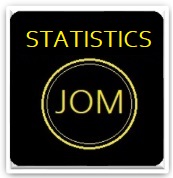ANALISIS PERENCANAAN SUMBER DAYA MANUSIA DI UNIVERSITAS NUSA CENDANA KUPANG
Abstract
The purpose of the research is to ensure the availability of human resources in the future at the University of Nusa Cendana. The research sample is the Faculty of Social Sciences (FISIP) and the Faculty of Teaching and Education Science (FKIP). The method in data analysis is the forecasting technique. The results showed that the qualifications of FKIP and FISIP lecturers matched the target of the Ministry of Education and Culture, which is the percentage of lecturers who have work experience or are certified educators. Indicators of the adequacy of the number of functional positions; professors, head lectors, and lectors assigned as the lecturer set by BAN-PT are still below the standard. Lecturer-Student Ratio (RDM) is beyond the ideal conditions. The lecturer entering their retirement in 2022 are high, thus the demand for lectures is high. The limitations of this study were the unavailable completed documentation and the limited scope in two faculties only.
Keywords: Human Resource Planning; Forecasting; Lecturer-Student Ratio
Downloads
References
Bulla, D.N., & Scott, P.M.Bulla, D.N., & Scott, P. M. (1994). Manpower requirement forecasting: A case example in (eds) Ward, TP Bechet & Tripp, Human Resource forecasting and modeling, The Human Resource Planning society, New York.
Cushway, B. (2016). Human Resources Management (Manajemen Sumber Daya Manusia). Jakarta: PT. Gramedia
Depdikbud. 2015. Undang-Undang Republik Indonesia Nomor 14 Tahun 2005 tentang Guru dan Dosen. Cetakan ke 2. Jakarta: Sinar Grafika.
Handoko, H. (2002). Manajemen Personalia dan Sumber Daya Manusia. Cetakan XIV. BPFE-Yogyakarta
Jackson, S.E., & Schuler, & W. (1990). Human Resource Planning: Challenges for Industrial/Organization Psychologists. West Publishing Company.
Kelly, E. D. dan Becker, B., (2000). Community Planning: An Introduction to the Comprehensive Plan. Island Press.
Kementerian Pendidikan Nasional. (2010). Rencana Strategis Kementerian Pendidikan Nasional 2010-2014.
Kementerian Pendidikan Nasional. (2020)- Statistik Perguruan Tinggi 2020/2024. Jakarta
Boudreau, J. W., & Milkovich, T.G. (1993). Human resource management (Praha (ed.)). Grada Publishing.
Mathis R. L. & Jackson,J. 2016. Manajemen Sumber Daya Manusia. Buku 1, Alih Bahasa: Jimmy Sadeli dan Bayu. Prawira Hie, Salemba Empat. Jakarta
Mondy, W. R., & Noe, R. M. (2006). Human Resource Management (Pearson ed). Jurnal Manajemen Indonesia Vol. 4 No. 1 (2016) - Articles
Nadzar, dkk.(2016). Analisis Kebutuhan Dosen Di Jurusan Manajemen Fakultas Ekonomi Undiksha, -Articles
Nawawi, H. (2005). Manajemen Sumber Daya Manusia Untuk Bisnis yang Kompetitif .Cetakan Keempat. Penerbit Gajah Mada University Press, Yogyakarta.
Nitisastro, W, (1985).Manajemen Pemerintahan, Yayasan Penerbit Adm, Jakarta, Resource Planning society, New York.
Pusat Data dan Informasi Pendidikan. (2008). Indikator Pendidikan. Jakarta.
Priyono, M.(2008). Manajemen Sumber Daya Manusia. Zifatama Publisher,
Rivai, V. (2005). Manajemen Sumber Daya Manusia Untuk Organisasi. Raja Grafindo Persada.
Reilly, P. (1996). “Human Resource Planning: An Introduction”. IES Co-operative Research Programme, The Institute for Employment Studies. Mantell Building University of Sussex Brighton. US.
Sabrina. (2021). Manajemen Sumber Daya Manusia, Umsu Press, Medan 2021
Sedarmayanti. (2013). Manajemen Sumber Daya Manusia: Reformasi Birokrasi dan Manajemen Pegawai Negeri Sipil. Bandung: PT. Refika Aditama.
Simamora, H (2015). Manajemen Sumber Daya Manusia. Yogyakarta: STIEY
Stone D, N., Stephanie, M., and Bryant, B. W. (2010). Why Are Financial Incentive Effects Unreliable? An Extension of Self-Determination Theory. Behavioral Research In Accounting, 2.
Usman, H. (2010). Perencanaan SDM. Gajah Mada University Press.
Werther, WiB & Keith D., (1996). Human Resources and Personnel Management. New York: Me Graw - Hill, Inc.

 Leony M Ndoen(1*)
Leony M Ndoen(1*)



